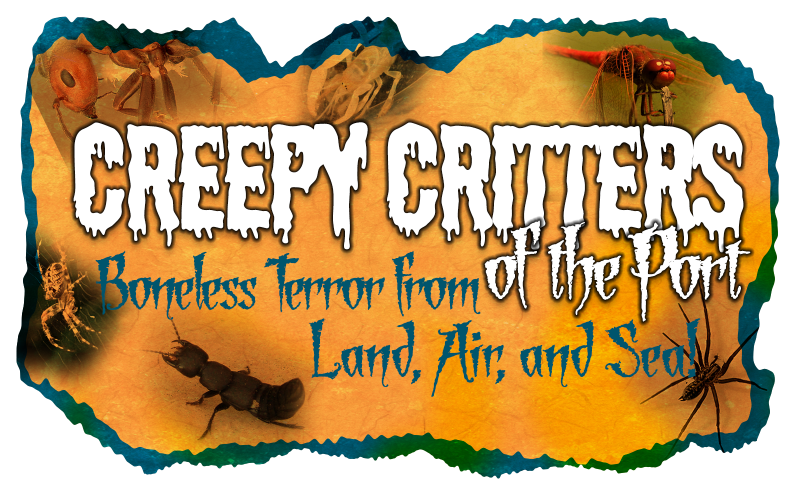
Boneless Terror from Land, Air, and Sea!
By Jenn Stebbings and Devlin Donnelly
Who knew that being spineless could be so bone-chilling? You might encounter these creepy critters on, below, or above Port properties … or even your own house. But don’t be afraid! These exoskeletons may give you nightmares, but each of these critters play important roles in our ecosystem. They might not be pleasant to look at, but they’re beautiful on the (squishy) inside.

Land
Spider Season
You’ll find these guests scurrying about in your home with their earthy tones of brown and muddy red or yellow. They have hairy legs, pedipalps, and abdomen. Even though they might seem like an unwanted guest, they are friendlier than they appear. Learn What Happens During Fall Spider Season from the Seattle Times
Giant House Spider
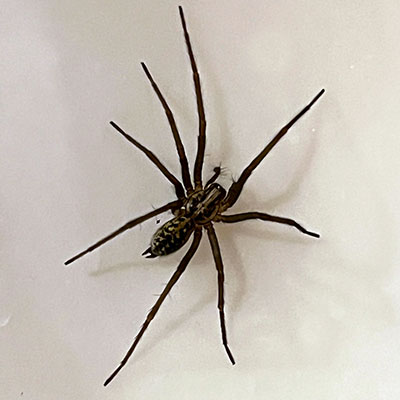
- A giant house spider can grow to over four inches(!!!) but they are completely harmless to humans
- Giant house spiders have evolved to live indoors and are considered beneficial because they eat pests like flies, earwigs, and bedbugs
- You may want to relocate these spiders outside, but that will kill them. The best thing you can do for these eight-legged friends is move them to your garage instead
Orb-Weavers
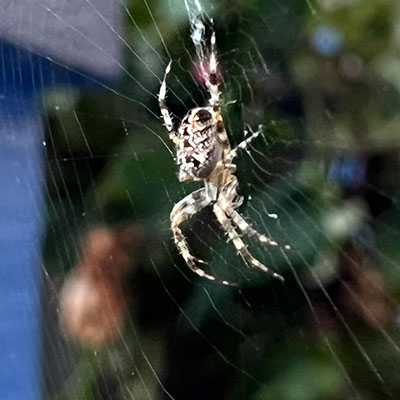
Orb-weavers are commonly found across Washington State. They are in the Araneidae family which includes over 3,000 species in 177 worldwide, making Araneidae the third largest family of spiders.A cross orb-weaver almost always hangs upside down in the middle of their web, patiently awaiting their prey
- Many orb-weavers build a new web each day in the same general location, keeping their webs free of debris
- Approximately 25% of an orb-weaver’s diet consists of pollen, fungal spores, and even their own webs!
Thatcher Ants
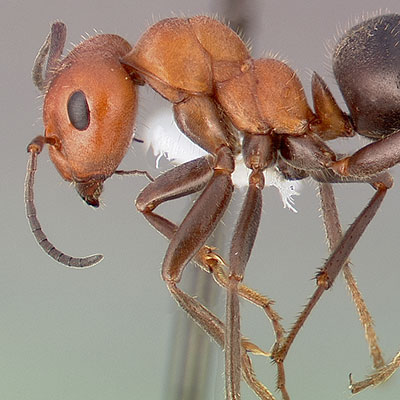
Harvard University Share
and Share alike License
Known as the Western Thatching Ant, Formica obscuripes is a dominant critter in many habitats across western North America, including the Puget Sound area. Their large, thatched mounds and huge colonies with tens or hundreds of thousands of workers are distinctive. They suppress other ants in the vicinity of their nests. There are approximately 2.5 million ants for every human on the planet.
- A thatcher ant mound can reach over five feet tall!
- Thatcher ants are scavengers and omnivores and will “harvest” honeydew produced by aphids
- Thatcher ants can be aggressive if disturbed and will bite if you’re not careful
- Learn more at AntWiki
Devil’s Coach Horse Beetle

This non-native beetle originated in Europe; however, it is not considered invasive because it does not outcompete or dominate native species. It has a large body with an articulating abdomen that excretes a foul-smelling goo if the beetle feels threatened and will also deliver a painful bite.
- It can grow to over an inch long and has been associated with sinister superstitions since the Middle Ages
- It unts at night and other invertebrates such as snails and slugs are a favorite meal (see, not all bad!)
- The beetle can grow up to 1.3 inches long and live for up to two years
- Find out more

Air
Cardinal meadowhawk dragonfly

There are several species of dragonfly found in the Puget Sound Region and one is the cardinal meadowhawk. Though elegant fliers as adults, as larvae they are aquatic, drab, and have large eyes, small wing buds on the back of the thorax, and gills on their rectums (yes, you read that right). They breathe by drawing water in and out of their hind end. Forcefully expelling this water quickly propels them through the water towards t their prey.
When tracking down prey, a dragonfly holds its six legs together like a basket and scoops up its prey. Its giant eyes, which take up most of its head, provide 360-degree stereo vision — the best in the insect world. For many insects, from mosquitoes to butterflies, a view of the dragonfly's fierce face is their last before they’re devoured.
- When after prey, a dragonfly holds its six legs together like a basket and scoops prey up. Its giant eyes, which take up most of its head, provide 360-degree stereo vision — the best in the insect world. For many insects, from mosquitoes to butterflies, a view of the dragonfly's fierce face is their last before they’re devoured.
- This spring visit the Duwamish River People’s Park and you might see a dragon (fly)!\
- Learn more at Parent Map

Sea
Ghost Shrimp
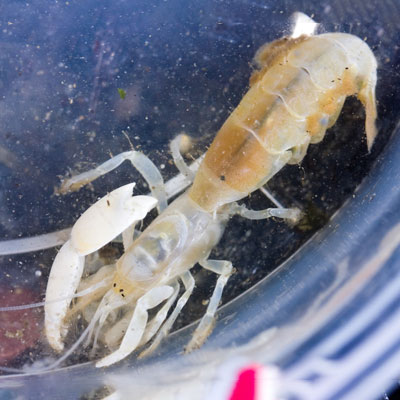
some rights reserved (CC BY)
These ghostly invertebrates haunt marine sloughs and bay flats in Puget Sound and along the Pacific Coast. The ghost shrimp burrows in the seafloor for protection and food collection from the sediment and the water flowing through their burrow.
- A hardy animal, a ghost shrimp can survive without oxygen for as long as six days
- To find enough food, the ghost shrimp tunnels almost constantly, reworking the sediment to a depth of as much as 30 inches (76.2 cm)
- Its burrow is attractive to other small invertebrates as well — both for protection from predators and for leftover food. Other inhabitants of a ghost shrimp’s burrow might include pea crabs, scale worms, and snapping shrimp. A clam might even put its siphon into a ghost shrimp’s burrow
- Ghost shrimps, though very small, are a food source for humpback and gray whales, some of the largest creatures on the planet!!






